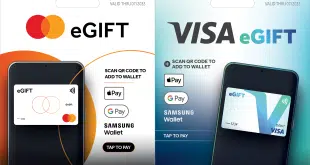As manufacturers scramble to develop tablet computers to challenge Apple Inc.’s dominant iPad, findings from an electronic-commerce services firm suggest payments companies looking for new transaction volume through mobile devices would be smart to do everything they can to encourage consumers to buy things on the iPad and its competitors. In a study of sales patterns at three merchant clients over the past year, Delray Beach, Fla.-based Ability Commerce found that while consumers frequently visit online retailers’ Web sites using smart phones and tablets, they were much more likely to buy if they were using a tablet.
At “Client A,” for example, the iPad accounted for 17% of site visits by all mobile devices but 34.8% of revenues from them. Respective iPad visit/revenue figures for “Client B” were 14.9%/51.6%, and 49.2%/91.5% for “Client C.”
Ability Commerce provides Web sites or other e-commerce services for 271 clients in 31 states and the United Kingdom. The company used Google Inc.’s Google Analytics service to analyze the three clients’ site traffic and sales on mobile devices between Aug. 30, 2010 and Tuesday. Google Analytics tags enabled Ability Commerce to identify traffic by device manufacturer and mobile operating system.
Apple introduced the iPad in April 2010 and virtually owns the market for tablets, which are portable computers that occupy a niche between smart phones and laptops. They typically run on mobile operating systems but have bigger screens and more capabilities than smart phones.
While hoopla abounds about the coming of mobile commerce and its technological underpinnings, Ability Commerce’s findings suggest that merchants and their payment processors will encounter the same problem with m-commerce that they’ve been dealing with since merchandising on the Internet began more than 15 years ago: low conversions of site traffic into sales. But for credit and debit card processors and alternative-payments providers, more sales would mean more revenue-generating transactions. “I don’t think anybody is talking about this,” says Jennifer Tonisson, marketing and training manager at Ability Commerce. “Nobody is talking about mobile conversion.”
According to Ability Commerce, smart phones just don’t pack the conversion punch that the iPad does. Apple’s iPhone, for example, accounted for 37.2% of mobile-device visits at Client A but only 31.2% of revenues. Respective iPhone visit/revenue figures for Client B were 42.9%/27.7%, and 30.8%/8.1% for Client C.
Patterns are similar at the three merchants with Google’s Android mobile operating system, an open platform for which there are lots of smart phones from multiple manufacturers but few successful tablets. At Client A, Android devices accounted for 31.7% of visits but only 30% of revenues. Client B got 31.2% of its mobile traffic through Android but only 19.2% of its revenues. The breakdown for Client C was 13.2% and 0.2%.
It’s no surprise that tablets have higher conversions than smart phones. “It’s just easier to buy with tablets; you can see more, you can do more,” says Tonisson. “It’s more like being on your laptop.”
The number of tablets in the market assuredly will grow as the iPad continues on its roll and manufacturers bring out new models for Android and other operating systems. Sony Corp., for example, on Wednesday introduced the Sony P, whose $499.99 price tag matches an entry-level iPad. Most other tablets will cost less but still more than smart phones, and that’s one reason why smart phones are likely to dominate m-commerce in the initial going despite their apparent conversion weakness.
Meanwhile, new quarterly data from Internet-metrics company comScore Inc. estimate 82.2 million Americans owned smart phones in July, up 10% from April. Smart-phone owners represent 35% of the 234 million people who carry mobile devices. Some 22% of smart-phone owners Reston, Va.-based comScore surveyed in July said they had purchased an item online using their phones.
Android continued its rapid gain in mobile-phone operating system market share, climbing to 41.8% versus 36.4% only in April. Some 27% of respondents reported using Apple’s system, up from 26% three months earlier. Research in Motion Ltd.’s BlackBerry platform slid four points in the period to 21.7%. Microsoft Corp.’s system claimed only a 5.7% share, down from 6.7%, and the Symbian system slipped to 1.9% from 2.3%. ComScore surveyed about 30,000 mobile subscribers ages 13 and up for its July study.





